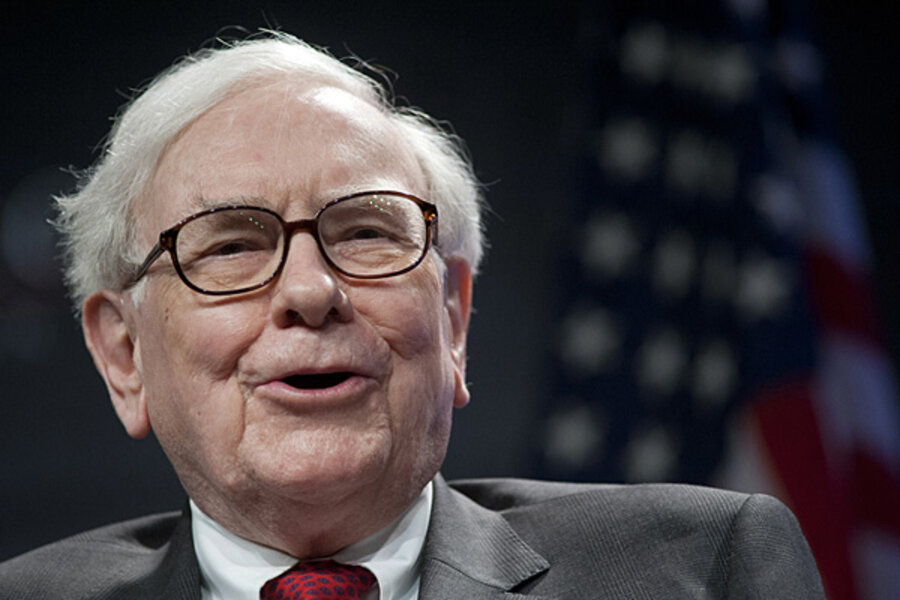What Warren Buffett's stock market math means for your retirement
Loading...
A few weeks ago, I discussed a Bloomberg article about Warren Buffett’s projections for the stock market over the long term. Here’s a refresher on what Buffett said:
“The economy, as measured by gross domestic product, can be expected to grow at an annual rate of about 3 percent over the long term, and inflation of 2 percent would push nominal GDP growth to 5 percent, Buffett said. Stocks will probably rise at about that rate and dividend payments will boost total returns to 6 percent to 7 percent, he said.”
Let’s assume that Buffett is exactly right with his predictions. What does that mean for retirement savings?
First, we have to make a few assumptions. Let’s assume that you’re going to want to be able to withdraw 60% of your salary each year for 25 years out of your retirement savings when you retire, so we’ll use that as a target amount.
We’ll also assume, for convenience, that you’re going to be invested entirely in a broad-based index fund until the day you retire and then you’ll switch everything to more secure investments that will just match inflation.
We’re also going to assume that the return Buffett describes is steady. The stock market is volatile year over year, but over a very long term, it’s not that terrible. I’m also going to assume that you get half of the return during the year you invest it because it’s so steady (since most people contribute throughout the year, not in one lump sum at the end).
We’ll also rip inflation out of the question. Buffett states that a stock market investment will earn about 3% per year outside of inflation plus an additional 1.5% in dividends, so let’s use that. We’ll ignore inflation and assume that the stock market will rise faster if inflation goes up to match it, as Buffett predicts.
So, what we’re left with is that every dollar we put into retirement is going to earn a 4.5% annual return beyond inflation in the stock market – the 3% growth plus 1.5% dividends that Buffett predicts. However, we don’t have to worry about inflation at all – we’re just going to try to match our current salary in retirement.
Let’s say Bob is making $50,000 a year. In order to be able to pull out 60% of that per year for 25 years, Bob will need to have $750,000 in retirement savings. What will Bob have to save each year to make his dream of retiring at age 65 with long-term security come true?
What if Bob is 50? That means he has fifteen years to reach that $750,000 target. To reach that target in that timeframe, Bob would have to sock away $33,000 per year. This would give him $766,607.22 over the course of those fifteen years. Bob would have to put away almost all of his take-home pay into retirement to make that goal, so that’s probably unrealistic.
Let’s back off a bit and say that Bob is 40. That means he has twenty five years to reach that $750,000 target. To reach his target in that timeframe, Bob needs to save $15,500 per year, or about 30% of his annual salary, to make that target. This would give him $753,935.25 after those twenty five years.
What if Bob is 35? To reach that target, Bob needs to save $11,300 per year, giving him $748,165.28 after those thirty years.
What if Bob is 30? To reach the big $750,000 target, Bob merely needs to save $8,500 per year, giving him $748,872.57 at retirement.
Even at age 25, the savings are intense. To reach that target at retirement, Bob needs to sock away $6,500 per year, giving him $750,007.30 at retirement. That’s still 13% of Bob’s salary.
In other words, if you believe in Buffett’s numbers instead some of the more rosy projections, you should be saving as much as possible for retirement.
Why such a different picture than the 10% or 15% suggestions that investment managers often give? Those managers are using overoptimistic approaches, as noted in that article:
“The Standard & Poor’s 500 Index, a benchmark for U.S. stocks, surged 18 percent a year on average from 1982 to 1999. The bull market tainted investor expectations, Buffett said. Polls in the late 1990s showed some investors expected stocks to gain 14 percent to 15 percent a year, he said.
“‘Thinking that in a low-inflation environment is dreaming,’ he said.”
Retirement advice that indicates that you’ll be fine by just saving 10% of your income starting at age 40 is using unrealistic assumptions, at least from Buffett’s perspective.
Save plenty for retirement, and start saving now.
The post Applying Warren Buffett’s 7% Figure to Your Retirement appeared first on The Simple Dollar.






